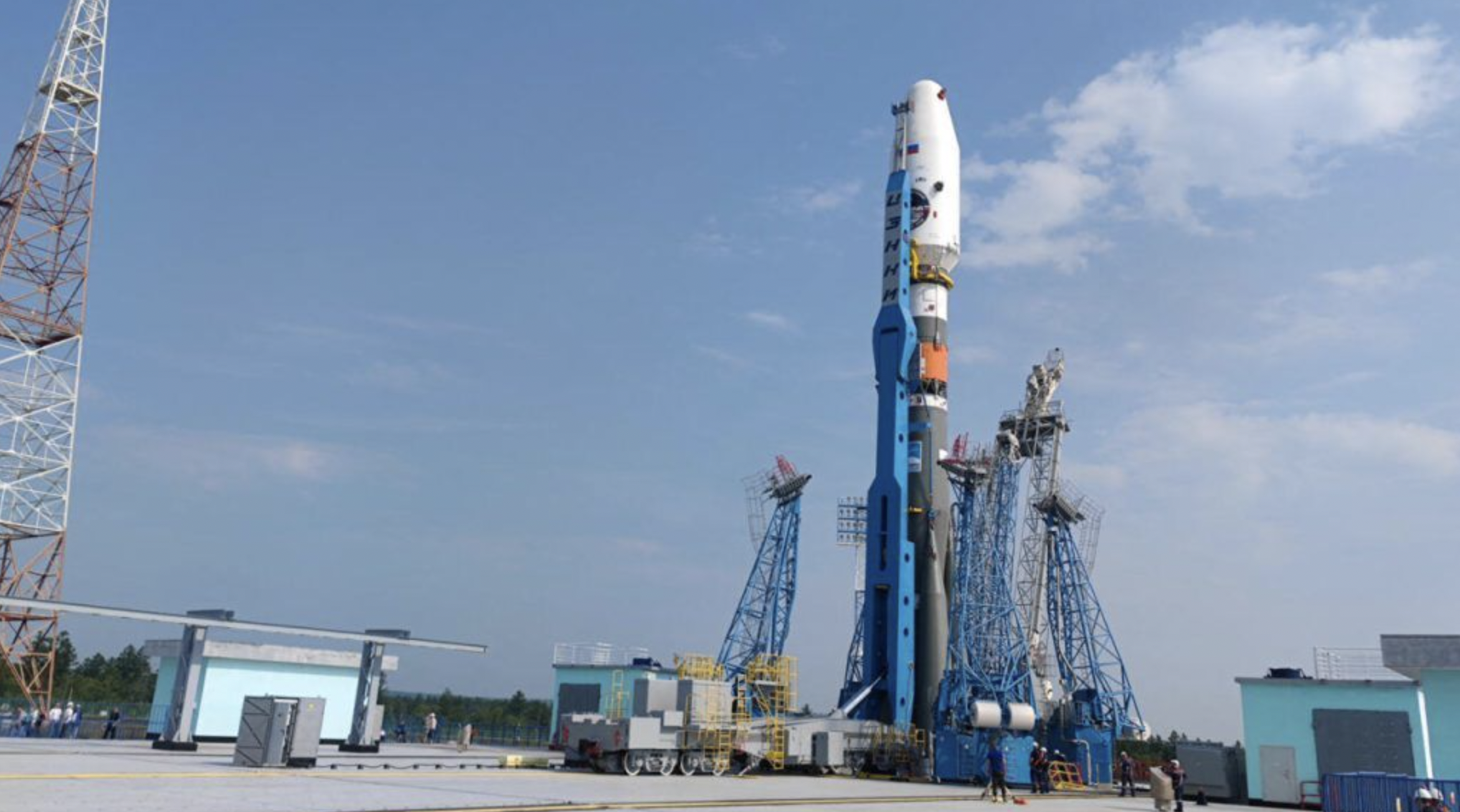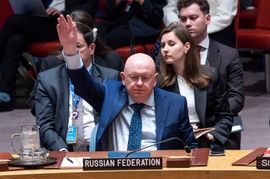Russia successfully launched its first moon-landing spacecraft in almost fifty years on August 11.
A Soyuz rocket lifted Luna-25, a moderately sized robotic lander, to Earth orbit from the Vostochny cosmodrome in the far eastern part of Russia. About 80 minutes after the launch, the Roscosmos space agency confirmed that the Luna-25 spacecraft was pushed on a course to the moon.
It is expected transfer to lunar orbit on August 16 and will attempt to land on the moon’s south pole on August 21.
The lunar south pole is of particular interest due to the possible presence of ice, which has captured the attention of various space exploration programs.
Weighing 1.8 tonnes and equipped with 31 kg (68 pounds) of scientific instrumentation, the Luna-25 aims to extract rock samples from depths of up to 15 cm (6 inches) using a scoop. The samples can be analyzed for the potential existence of frozen water, a critical resource that could potentially sustain human life.
The launch of Luna-25 occurred a few weeks after India sent up its Chandrayaan-3 lunar lander, scheduled to touch down at the lunar pole on August 23.
Roscosmos assures that their distinct landing zones prevent any possibility of interference or collision between the two spacecraft.
“There is no danger that they interfere with each other or collide,” the space agency said. “There is enough space for everyone on the moon.”
While Chandrayaan-3 is slated to conduct experiments over a two-week period, the Luna-25 mission is designed to operate on the moon for a full year. This initiative marks Russia's return to lunar exploration after a break, with its last post-Soviet lunar mission in 1976.
The mission has been in development for years and comes at a time when the Kremlin is looking to space as one way to signal Russia’s return to great-power status amid what it calls a “special military operation” in Ukraine.
In April, Russian President Vladimir Putin announced the country’s intention to resume the work on the creation of a new-generation transport ship and nuclear space energy technology. During his visit to the space launch facility in the Russian region of Amur, Putin recalled that in 1961 the Union of Soviet Socialist Republics was in complete isolation from the technological point of view and Western sanctions hit all spheres of development. In his words, today’s Russia with advanced technologies will be able to further develop its space program up to 2030 and assured the country will achieve this.







 Azerbaijan and Armenia started the process of demarcation of their border on Tuesday, with the installation of the first border markers based on ge...
Azerbaijan and Armenia started the process of demarcation of their border on Tuesday, with the installation of the first border markers based on ge...
 President Aliyev emphasized the critical role of the North-South Transport Corridor in fostering transport cooperation between Azerbaijan and Russi...
President Aliyev emphasized the critical role of the North-South Transport Corridor in fostering transport cooperation between Azerbaijan and Russi...
 Iran and Pakistan have signed eight cooperation documents in various fields, and agreed to strengthen ties to fight terrorism in the region.
Iran and Pakistan have signed eight cooperation documents in various fields, and agreed to strengthen ties to fight terrorism in the region.
 As the conflict between Ukraine and Russia escalates, the strategic importance of Kharkiv, Ukraine's second-largest city, has come sharply into focus.
As the conflict between Ukraine and Russia escalates, the strategic importance of Kharkiv, Ukraine's second-largest city, has come sharply into focus.
 Iranian President Ebrahim Raisi expressed Tehran’s readiness to participate in significant development projects in Sri Lanka during the inauguratio...
Iranian President Ebrahim Raisi expressed Tehran’s readiness to participate in significant development projects in Sri Lanka during the inauguratio...



